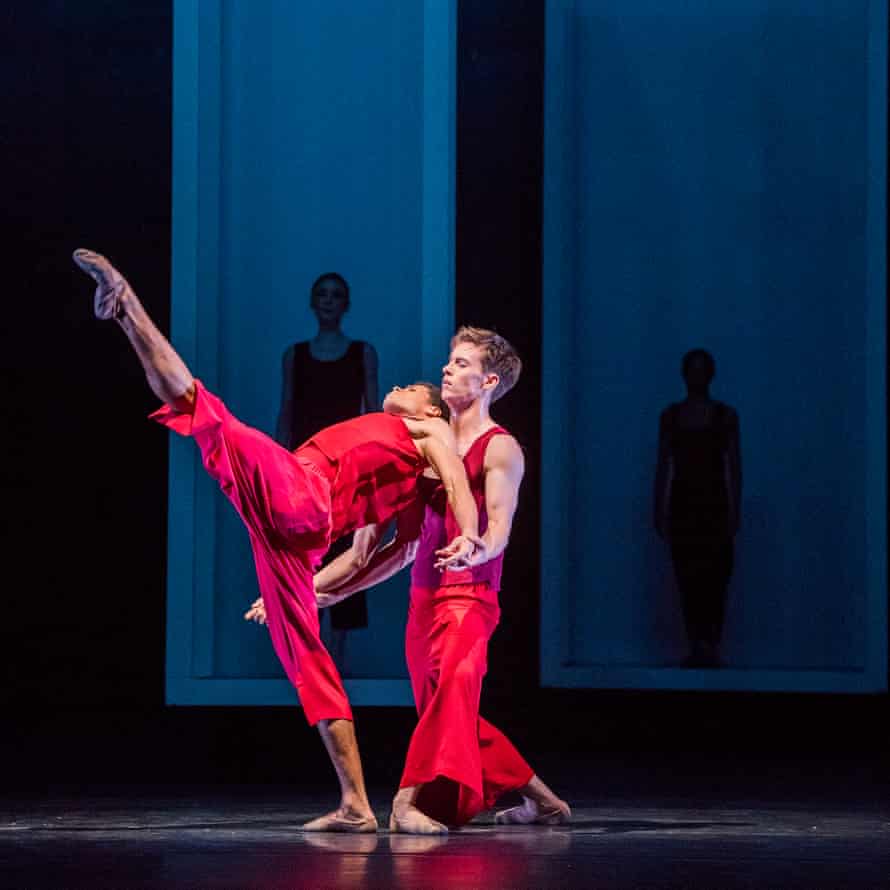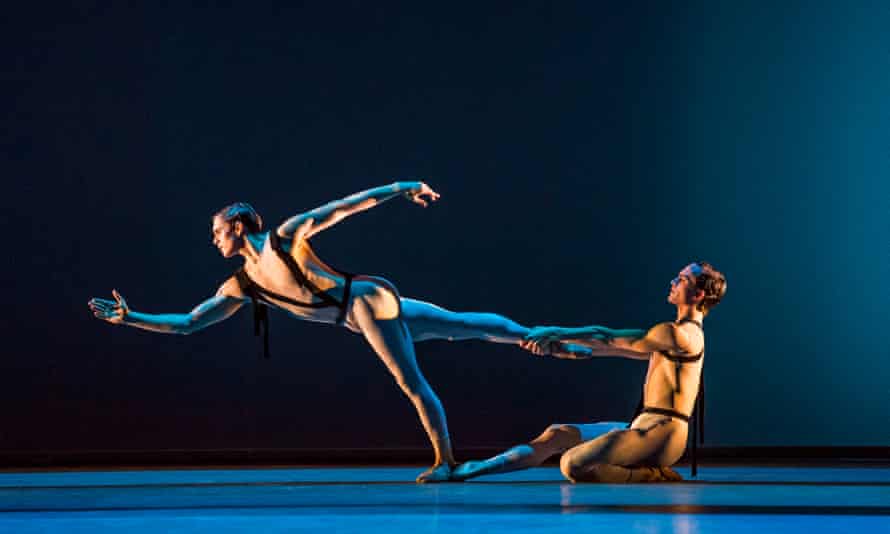Review Bernstein Centenary Live at the Royal Opera House London 03282018
I north Requiem pour L, choreographer Alain Platel and composer Fabrizio Cassol present a 15-strong ensemble of musicians and singers who perform a new version of Mozart's Requiem while slow-motion footage of a adult female dying is projected on a screen behind them. Platel, who is Belgian, is a veteran of more three decades of often controversial productions. He and Cassol are long-time collaborators, and Requiem pour Fifty came about after Cassol attended a funeral in Kinshasa, in the Democratic Republic of the congo. Around the aforementioned time, in Europe, Platel met a woman who knew that she was dying, and who agreed, as he explains in a pre-bear witness talk, "that we could moving picture her death, and use it in performance".
Cassol'due south contribution is magisterial. His Requiem, conducted by the Congolese artist-musician Rodriguez Vangama, combines a vast array of influences, among which Cassol cites the Pygmy, Indian and Malian traditions. It brings together operatic, polyphonic and choral singing, Latin and African texts, and virtuoso accordion, electric guitar, euphonium, likembe (thumb piano) and percussion. The singers and instrumentalists, all male person except for opera vocalist Nobulumko Mngxekeza, are too compelling movers. At intervals they break into dance, stepping and shimmying with liquid hips and shoulders and fluttery convolutions of arm and wrist.
All of this is joyous. And at that place'south nothing intrinsically wrong about the recording and screening of a person's death, as a number of Television documentaries have demonstrated. Simply in this context, watching a stranger dying in carefully framed closeup feels intrusive, and the longer it goes on (the piece lasts an hour and 40 minutes, without an interval), the more troubling it feels.
That the footage is shown in slow-motion makes things even more complicated. Instead of being a dispassionate record of L's expiry, the motion-picture show becomes a manipulated artwork, something altogether more ambiguous. By positioning the footage as the centrepiece of Requiem pour L, Platel is imbuing the piece with a poignancy and gravitas of which he is not the author. He's hitching a ride, artistically speaking, on someone else's tragedy.
Before in the week I watched Ruben Östlund'south The Foursquare, a Swedish motion picture about an fine art earth whose denizens are so numbed by fashionably transgressive posturing that they are barely capable of moral orientation. Conceptual dance hasn't yet fallen downwards that rabbit hole, but information technology'south where you lot stop up when artists consider themselves exempt from consequence by virtue of their status.
Platel freely acknowledges that in that location are ethical bug surrounding the inclusion of the death footage in Requiem cascade L, but information technology'due south difficult to avoid the determination that this is a project motivated, at least in part, past his desire to be seen as a boundary-breaker. "We wanted to endeavour. To see how far we could get," Platel says. "The whole thing had to be enormous." He's thrilled with the result. "It'south devastating… And at present I ask myself, what practise I desire to practice with the rest of my life?"

Concluding week, the Royal Ballet opened its Bernstein Centenary program, a triple bill, including two premieres, set up to work past Leonard Bernstein (1918-90). Start on the nib was Wayne McGregor'south Yugen, set to Bernstein'due south Chichester Psalms, commissioned in 1965 by the dean of Chichester Cathedral. It's a huge composition, simply McGregor'south dance is restrained. 11 dancers move through a series of encounters that trace the course of the music, demonstrate its compages, and make articulate that McGregor'due south is a secular rather than a religious response. Where the voice of solo treble William Davies soars, as if to cathedral vaults, nosotros see cursive body lines inscribed confronting the air by Calvin Richardson.
In place of foliate columns and stone tracery, McGregor gives us quietly ecstatic arcs described past Sarah Lamb in a duet with Federico Bonelli, and Richardson's calm rise as he'south carried by five male colleagues. Yugen is not quite balletic; arm movements come from the shoulder rather than the back, and in that location'due south little sense of spiralling torsion or épaulement. But it'southward fascinating to sentry the evolving stylistic negotiation betwixt McGregor and the Purple's dancers.
The evening's other works are Liam Scarlett's strongly danced simply conceptually baffling The Age of Feet, created in 2014, and Christopher Wheeldon's Corybantic Games. The latter, as exquisitely crafted as information technology is weightless, infuses a pastoral Arcadian landscape, replete with sapphic interludes (Yasmine Naghdi, Beatriz Stix-Brunell), with a gym-bunny aesthetic embodied with commanding, you-go-daughter sexiness by Tierney Heap. Matthew Brawl and William Bracewell also dally to fine aesthetic result. Champagne, but not quite vintage.

Star ratings (out of five)
Requiem pour L ★★★
Yugen ★★★★
The Age of Anxiety ★★
Corybantic Games ★★★
Source: https://www.theguardian.com/stage/2018/mar/25/requiem-pour-l-bernstein-centenary-observer-review
0 Response to "Review Bernstein Centenary Live at the Royal Opera House London 03282018"
Postar um comentário